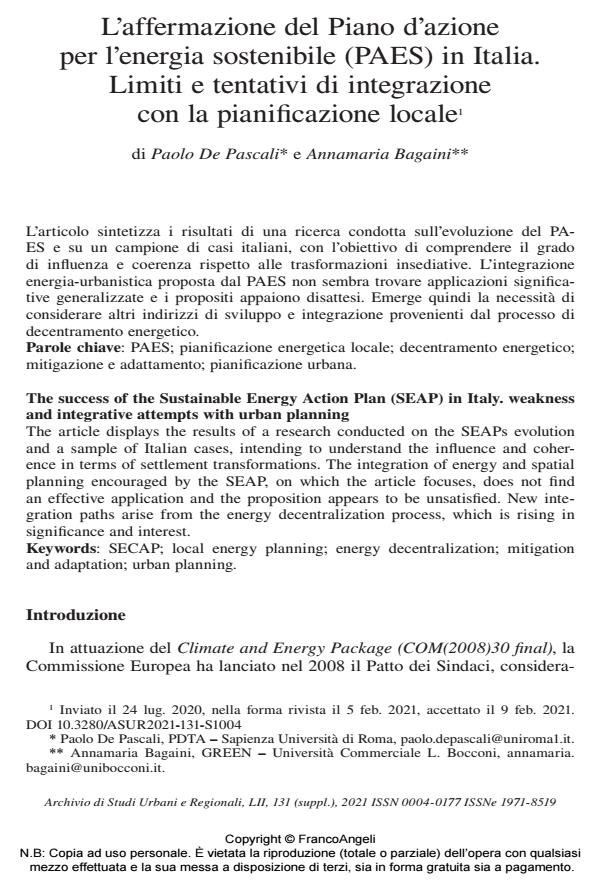The success of the Sustainable Energy Action Plan (SEAP) in Italy. Weakness and integrative attempts with urban planning
Journal title ARCHIVIO DI STUDI URBANI E REGIONALI
Author/s Paolo de Pascali, Annamaria Bagaini
Publishing Year 2021 Issue 2021/suppl. 131
Language Italian Pages 26 P. 71-96 File size 260 KB
DOI 10.3280/ASUR2021-131-S1004
DOI is like a bar code for intellectual property: to have more infomation
click here
Below, you can see the article first page
If you want to buy this article in PDF format, you can do it, following the instructions to buy download credits

FrancoAngeli is member of Publishers International Linking Association, Inc (PILA), a not-for-profit association which run the CrossRef service enabling links to and from online scholarly content.
The article displays the results of a research conducted on the SEAPs evolution and a sample of Italian cases, intending to understand the influence and coherence in terms of settlement transformations. The integration of energy and spatial planning encouraged by the SEAP, on which the article focuses, does not find an effective application and the proposition appears to be unsatisfied. New integration paths arise from the energy decentralization process, which is rising in significance and interest.
Keywords: SECAP; local energy planning; energy decentralization; mitigation and adaptation; urban planning.
- Innovation in Urban and Regional Planning Giovanni Tedeschi, pp.409 (ISBN:978-3-031-54095-0)
- Technological Imagination in the Green and Digital Transition Timothy Daniel Brownlee, pp.801 (ISBN:978-3-031-29514-0)
Paolo de Pascali, Annamaria Bagaini, L’affermazione del Piano d’azione per l’energia sostenibile (PAES) in Italia. Limiti e tentativi di integrazione con la pianificazione locale in "ARCHIVIO DI STUDI URBANI E REGIONALI" suppl. 131/2021, pp 71-96, DOI: 10.3280/ASUR2021-131-S1004